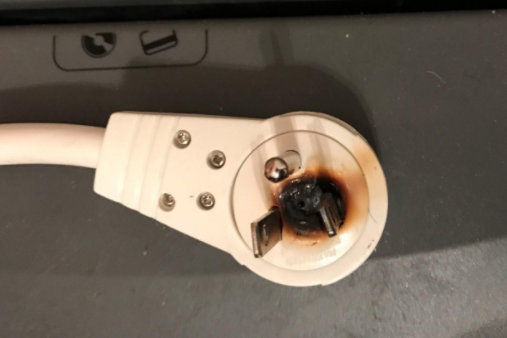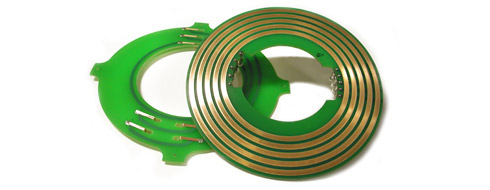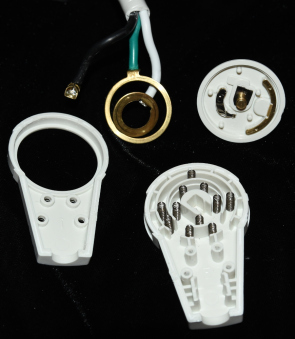
A few weeks ago I needed a power strip in my home office. The outlet in question is located behind a filing cabinet so it would need a low profile plug. I jumped on Amazon to buy a surge suppressor strip. That’s when I noticed strips with rotating plugs. I’ve always had some apprehensions about plugs like that, though I could never quite put my finger on why.
Looking at the reviews on this particular plug, I found some scary issues. Photos of melted plugs, melted outlets, and cries of “fire hazard”. So I did what any crazy hacker would do – bought two power strips. One with a fixed right angle plug to use in my office, and one with a rotating plug to tear down.
Surge suppressors, power strips, outlet strips, they have many names. Underwriter’s Laboratories (UL) calls them “Relocatable power taps”. They all have several outlets, most have a circuit breaker of some sort inside, and some have circuits for surge suppression. These are some of the most common devices to find in the modern home. Many of our houses were designed and built before surround sound, cable boxes, computers, modems, cell phone chargers, tablet chargers, and all our other modern conveniences. There weren’t as many electrical loads, so the houses didn’t have many outlets. Power strips solve this problem.
After a couple of days, I had my strips in hand. I expected the plug to rotate once – maybe 270 degrees. That would indicate there were wires connecting the rotating head to rest of the plug. Not so – this plug would spin round and round all day long.
Slip rings

The plug rotates 360 degrees, yet still allows the hot, neutral, and ground wires to stay connected. It does this with the help of slip rings. Slip rings are devices that transmit one or more electrical signals across a rotating joint. Large slip rings can carry 100 or more separate circuits. Most car alternators use slip rings to supply DC excitation current to the rotor. Mechanically they are close cousins to commutators, used to transmit power to DC motors. The difference is that a single slip ring is a single connection, where a commutator is a switching device — in a motor it commutates current to one of several coils. Packaged slip rings used to be expensive, hard-to-find items. Thanks to globalization, you can pick them up at Amazon. A twelve-circuit slip ring will run you $9.99 shipped to your door.
The thing with slip rings is that they are mechanical devices. They wear, they can shatter, and the connections made across them can become intermittent. If you’re powering a circuit through a slip ring, it’s a good idea to put your power supply circuit after the ring, and include enough capacitance to soak up any intermittent connections. I’ve seen older FPGA chips latchup and heat up enough to desolder themselves off a PCB due to power transients caused by a bad slip ring.
Analyzing the Patient
I knew I would be tearing down this connector, but Belkin gave me plenty of information before I got out my screwdriver. Printed on the plug itself was PATENTED USA 5,775,921. The inventor of this particular rotating plug design is Jonie Chou, and Belkin has licensed the patent. Belkin also has their own patents on similar devices, most invented by John Wadsworth. In fact, there are 17 references to Jonie Chou’s patent from Belkin assigned patents. It’s safe to say that Belkin is heavily invested in rotating plugs and outlets.

The post This Power Strip is a Fire Starter appeared first on FeedBox.